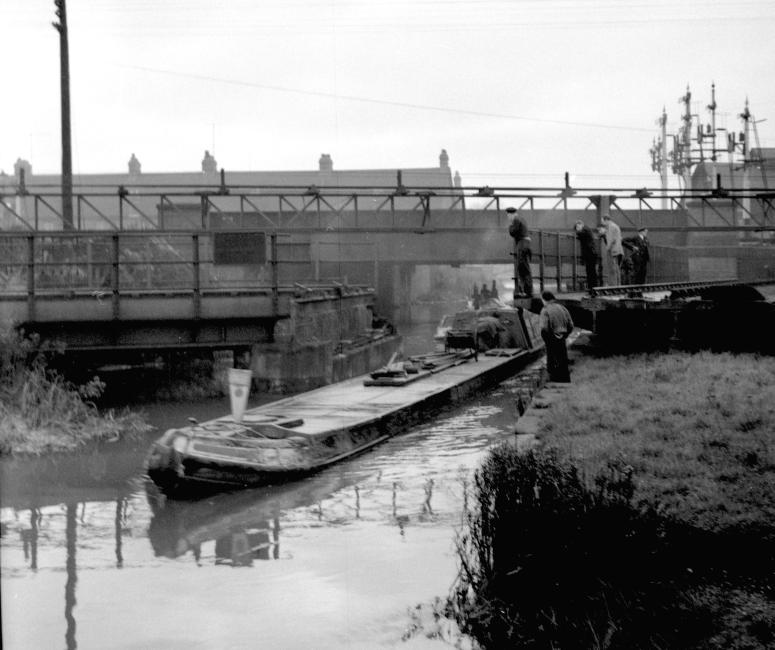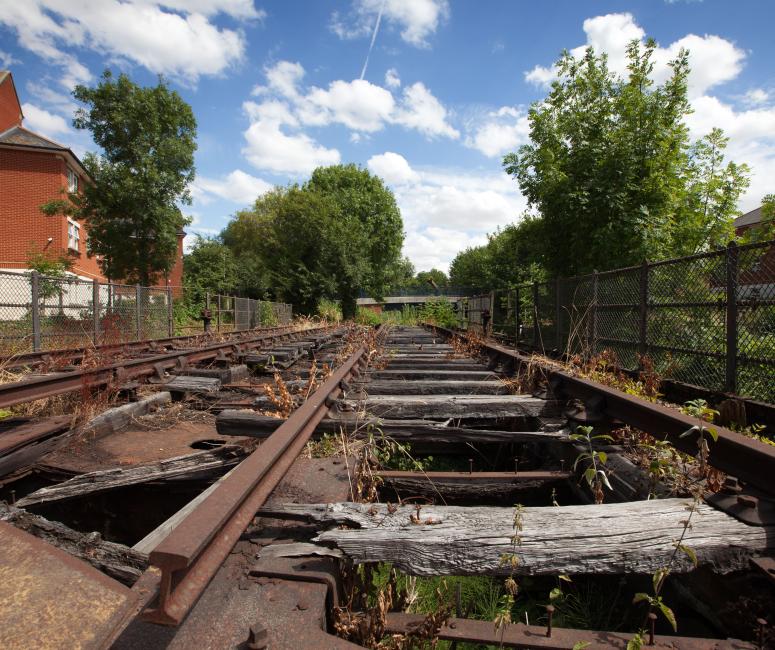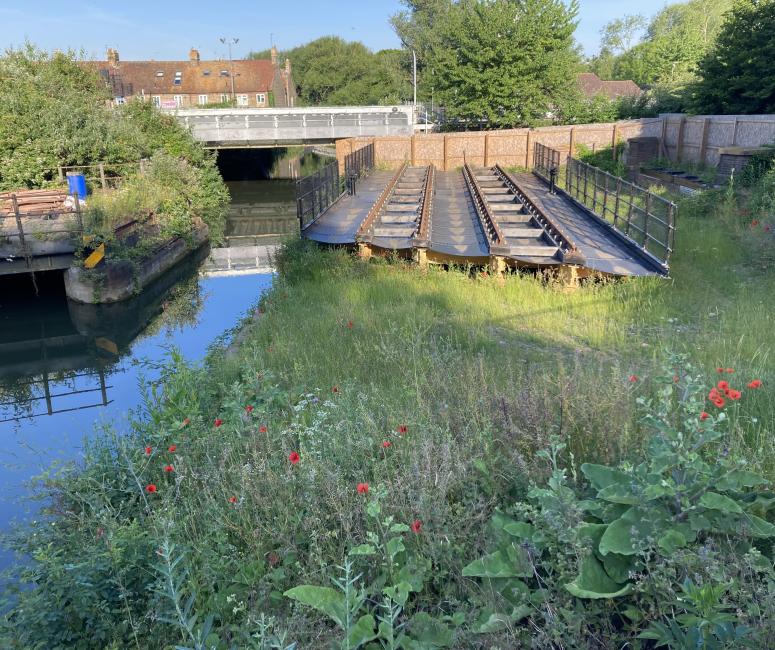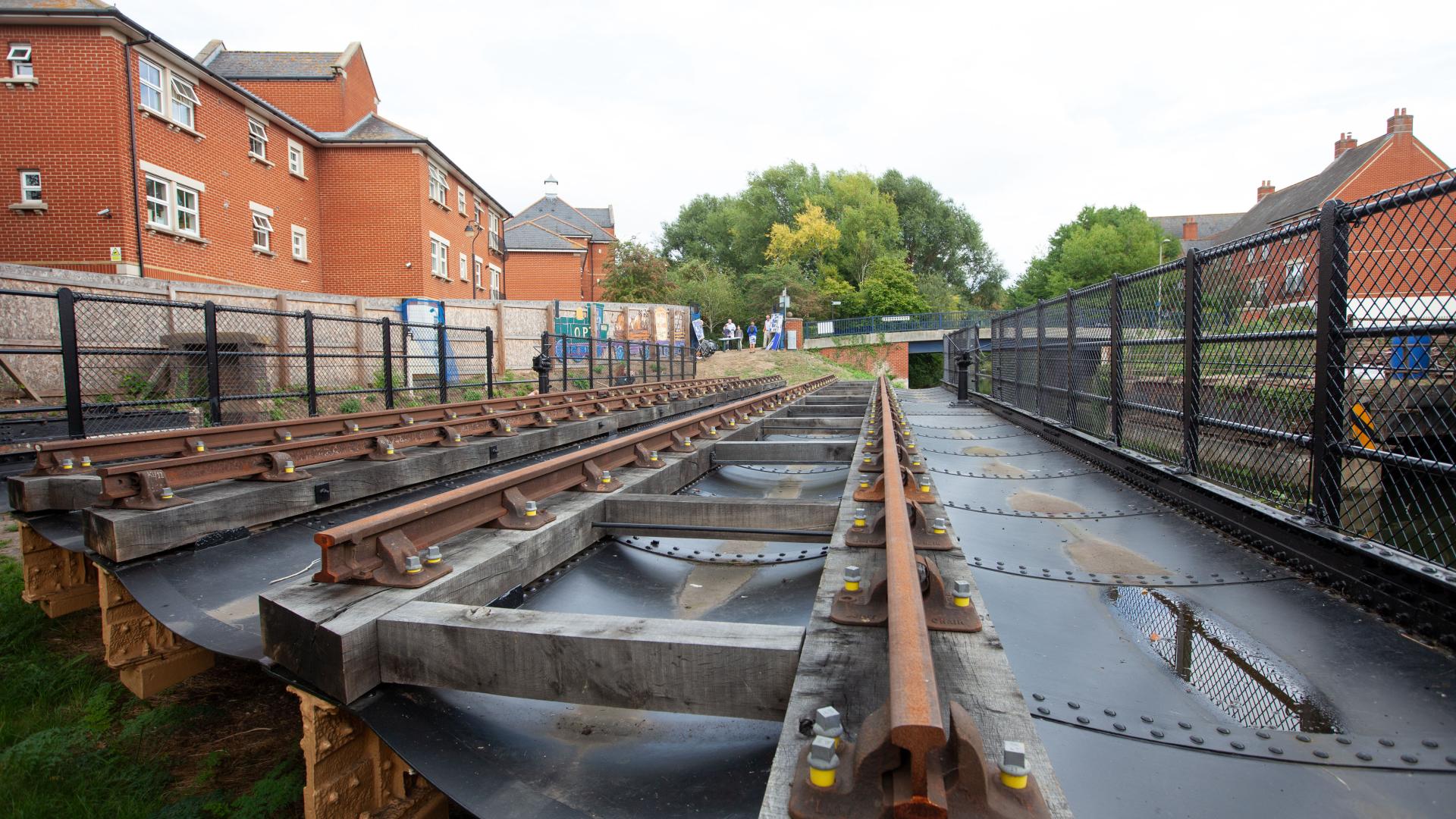The Rewley Road Swing Bridge was lying unused and rusting for decades. OPT's award-winning conservation project saved it from the Heritage at Risk Register.
The Rewley Road Swing Bridge
The Swing Bridge is a unique Victorian cast-iron railway bridge, designed by the famous Victorian engineer Robert Stephenson and dating from 1851. It sits next to the water at the Oxford Canal and was built to allow both trains and boats to cross the Sheepwash Channel, industries which were very important to Oxford. When the bridge was still in use, the railwaymen swung the bridge open to let boats pass and then swung it closed to allow trains to pass. The Rewley Road Swing Bridge is the earliest surviving mechanism of its kind in Britain and it is one of only two moving bridges on the Thames - the other being Tower Bridge in London.

The story of the Swing Bridge is not one of just the railways coming to Oxford, but of the part Oxford played in railways across England - of Stephenson and Brunel, and of the ‘Great Exhibition’ of 1851. Oxford and the Midlands became the scene of a battle between rival bidders, keen to expand because of its strategic location. In the end, Oxford ended up with two rival railway stations standing side by side. Until 1999, the other railway station was where the Saïd Business School now stands. It was built in the same modular construction by the architects of Crystal Palace, linking it to the Great Exhibition of 1851.
Around 1890, the Swing Bridge was substantially reconstructed in steel and the majority of the surviving structure visible today dates from this period. From October 1951, all trains were diverted into the GWR station we know today, and the swing bridge fell out of use.
A Story of Oxford
The Swing Bridge has a big story to tell, and one that is easy to overlook at first glance. In this city of fine buildings and architects, which are the stuff of dreaming spires, our town heritage can be undervalued. But this structure is so much more than its physical fabric. It is an important part of our ‘town’s’ history, and crucial to telling our transport history across the ages, from river, to canal, railway and road, and the significance it had on Oxford. There are all the people’s stories woven into the fabric of the structure, great stories of the people involved in its construction, but also of those whose livelihoods came from the railways, those who turned the bridge to allow the trains and the boats to pass, and the histories of their families living in railway owned properties, and of those who used the lines for their work and pleasure.

The Conservation Process
The Swing Bridge was lying unused since the 1980s and fell onto the Heritage at Risk Register in 2013. In 2020, ownership of the bridge was transferred from Network Rail to Oxford Preservation Trust and with funding from Railway Heritage Trust, we were able to conserve this essential part of Oxford’s Industrial heritage. The conservation work started in December 2020, with the removal of defective metalwork. The bridge was lifted, giving access to the turning mechanism underneath, and the metal was blasted to smooth out any rough surfaces and prepare the bridge for painting. After the cleaned metalwork was installed, the entire bridge was taken apart, cleaned, repaired, repainted, and put back together like a giant jigsaw puzzle. The paint dried just in time for the dismantling of the white tent and scaffolding for Oxford Open Doors 2021, and the Swing Bridge turned again for the first time in many decades.
A bridge for the 21st century
After an extensive period of conservation, the Swing Bridge sits proudly next to the railway and canal where it can be seen by everyone passing by. We are now working hard to create a special and biodiverse landscape around the bridge. In the autumn of 2022, the Swing Bridge was marked as ‘saved’ as it was removed from Historic England’s Heritage at Risk Register. In early December, the conservation project won the Railway Heritage Trust Conservation Award for 2022.

Partnerships
With the support of Network Rail, for whom the swing bridge was no longer operational, and with grants from Historic England, and the Railway Heritage Trust, the specialist conservation work to restore the disused railway bridge was carried out. This led to the swing bridge being marked as ‘saved’ as it was removed from Historic England’s Heritage at Risk Register. We were delighted to accept the Railway Heritage Trust Conservation Award for 2022, presented by HRH the Duke of Gloucester.


